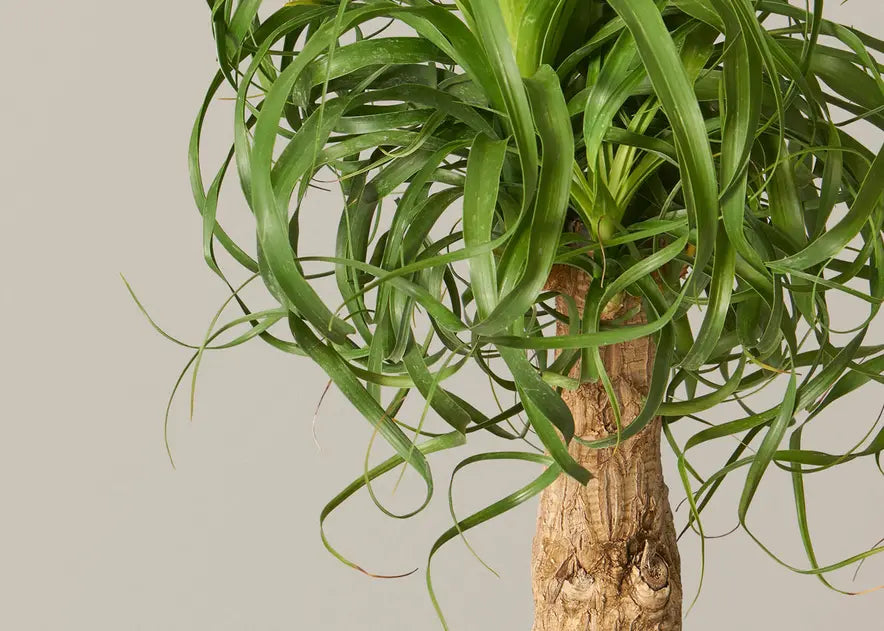
Plants 101
How to Care for a Ponytail Palm
Read on for simple instructions on how to care for a Ponytail Palm.

The Ponytail Palm, or Beaucarnea recurvata, is a member of the Agave family and is native to eastern Mexico. It gets its nickname from its long, thick trunk that resembles a ponytail. Despite its name, it is not a true palm and is actually more closely related to Succulents. The plant is popular as an indoor houseplant because of its unique appearance and low maintenance requirements.
Types of Ponytail Palm
There are several cultivars of Ponytail Palm, including:
- Beaucarnea recurvata- This is the most common type of Ponytail Palm, with a single trunk and a tuft of leaves at the top
- Beaucarnea guatemalensis- This cultivar has a more pronounced swollen trunk, with thinner and smoother leaves
- Beaucarnea gracilis- This cultivar has a smaller, bulbous trunk
Sunlight
Ponytail Palms prefer bright, indirect light to even some direct sunlight. They will thrive best in a South or West facing window, but an East facing window that gets morning direct sunlight can suffice but may cause the plant to grow more slowly. An unobstructed Northern exposure can also work but the lack of direct sunlight may stunt its growth. Not sure if your space will provide enough light? Consider measuring light to ensure your Ponytail Palm will receive enough!
Water
One of the most important things to remember when caring for a Ponytail Palm is to not overwater it. These plants store water in their swollen trunks and can go long periods without watering. Water only when the soil has compltely dried out which could be every 1-2 weeks depending on light and conditions in the home. Be sure to use a well-draining potting mix, and can utilize a moisture meter to help you properly gauage soil moisture and avoid overwatering!
Humidity
Ponytail Palms can tolerate low humidity levels and do not require any additional humidity in the air.
Temperature
These plants are relatively tolerant of a wide range of temperatures, but prefer warm temperatures between 65-85°F. They can survive in temperatures as low as 40°F, but it is best to avoid exposing them to temperatures below 50°F.
Soil
Use a well-draining potting mix when planting your Ponytail Palm. A cactus/succulent mix can also work but may cause you to water more frequently due to the increased drainage.
Common Problems
SYMPTOM: Leaves crisping, dry potting mix
CAUSE: Thirsty plant, underwatered
SYMPTOM: Yellowing leaves, wet potting mix
CAUSE: Overwatered
SYMPTOM: Brown leaf tips
CAUSE: Low humidity or soil compaction (aerate soil)
Precautions
Ponytail Palms are generally not toxic to humans or pets, but their leaves can be sharp along the edges, so it is important to keep them out of reach of children and pets to avoid injury.

Words By The Sill
Empowering all people to be plant people—a collection of articles from The Sill's team of plant experts across a variety of plant care topics to inspire confidence in the next generation of plant parents. Welcome to Plant Parenthood™.
Do Some Plant Shopping